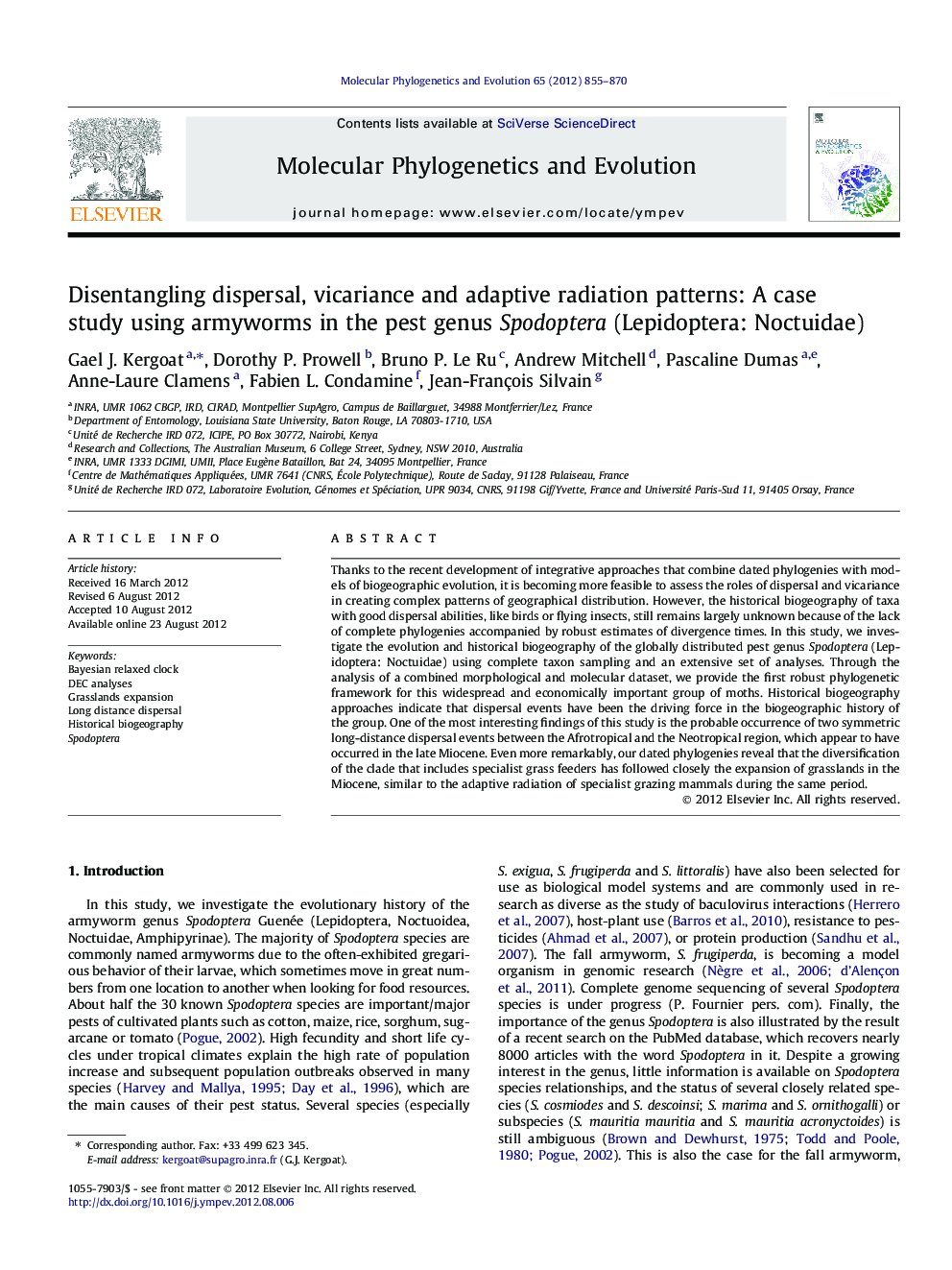| کد مقاله | کد نشریه | سال انتشار | مقاله انگلیسی | نسخه تمام متن |
|---|---|---|---|---|
| 5920125 | 1164280 | 2012 | 16 صفحه PDF | دانلود رایگان |

Thanks to the recent development of integrative approaches that combine dated phylogenies with models of biogeographic evolution, it is becoming more feasible to assess the roles of dispersal and vicariance in creating complex patterns of geographical distribution. However, the historical biogeography of taxa with good dispersal abilities, like birds or flying insects, still remains largely unknown because of the lack of complete phylogenies accompanied by robust estimates of divergence times. In this study, we investigate the evolution and historical biogeography of the globally distributed pest genus Spodoptera (Lepidoptera: Noctuidae) using complete taxon sampling and an extensive set of analyses. Through the analysis of a combined morphological and molecular dataset, we provide the first robust phylogenetic framework for this widespread and economically important group of moths. Historical biogeography approaches indicate that dispersal events have been the driving force in the biogeographic history of the group. One of the most interesting findings of this study is the probable occurrence of two symmetric long-distance dispersal events between the Afrotropical and the Neotropical region, which appear to have occurred in the late Miocene. Even more remarkably, our dated phylogenies reveal that the diversification of the clade that includes specialist grass feeders has followed closely the expansion of grasslands in the Miocene, similar to the adaptive radiation of specialist grazing mammals during the same period.
.Highlights⺠A dense species-level phylogeny of Spodoptera armyworms was inferred based on a combined dataset. ⺠Dispersal events were the driving force in the biogeographic history of the group. ⺠Two symmetric long-distance dispersal events between the Afrotropics and Neotropics were inferred. ⺠The clade of grass specialists developed specific adaptations in relation to the consumption of silica-rich grasses. ⺠Diversification of grass specialists closely followed the apparition of grasslands in the Miocene.
Journal: Molecular Phylogenetics and Evolution - Volume 65, Issue 3, December 2012, Pages 855-870